Give an old mirror a second look before throwing it away; it might be worth something. You can examine the mirror for yourself to look for many indicators that lead to unique vintage pieces, such as mirror frame design, the sculptor’s signature, and mint condition.
Nearly everyone is captivated by antique mirrors since they showcase the beauty in a room. But one of the most arduous tasks is knowing the actual value of your antique mirror.
This article will show you how to value your antique or vintage mirrors. Keep reading to discover more.
Table of Contents
Brief History of Antique Mirror Glass
Although polished metals, stones, and flat bodies of water have been utilized as reflective devices for thousands of years, mirrors, as we know them today, did not exist until the relatively 1600s.
The first “looking glasses,” as the earliest name went, were made from lead glass in Italy in the sixteenth century using a method that involved flattening blown cylinders.
Later on, mirrors were created using mercury and tin. They did so by coming one side of a glass with mercury to generate a chemical mercury and tin mixture.
The mercury method was poisonous and, consequently, discontinued, so they needed a better manufacturing process.
As a result, techniques and methods would be tested over the next several hundred years to create a better method of mirror production that was more effective and beautiful.
These mirrors would become well-known worldwide as extremely opulent and luxurious and only accessible to the upper classes of society.
Mirrors would grow more and more accessible as technology advanced and improved over the ensuing centuries, and production processes got quicker and less expensive.
Today, practically every home has access to these once-before-expensive items.
Types of Vintage Mirrors
There are numerous sizes, lengths, and mirror designs for antique mirrors. Discover the various antique mirror forms and their original uses in antique mirror design.
This list of mirrors and designs can help you recognize an antique mirror you already own or choose the one you want to buy.
Any mirror created at least 100 years ago is considered an antique.
So because the appearance of old mirrors never loses its fashion, modern mirror designers occasionally create mirrors that resemble antique pieces. Below are various types of antique mirrors.
1. Antique Hand Mirror
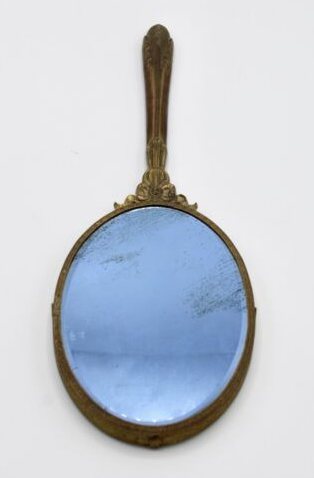
Ancient societies like Mesopotamia, Egypt, and China produced hand mirrors by forging reflecting metals. Later, different kinds of mirrors were employed.
However, handheld mirrors are so named because they were small and attached to a decorative handle, regardless of the employed reflective material.
The original glass-coated hand mirror had just around 3 inches in diameter when created in a region of what is now Lebanon in the first century A.D.
For Victorian women in the 1800s, vintage mirror and brush sets were popular, also known as convex mirror Victorian.
In the late 1800s, hand mirrors with hand-painted porcelain backs were common in France and Germany.
2. Full-Length Mirror
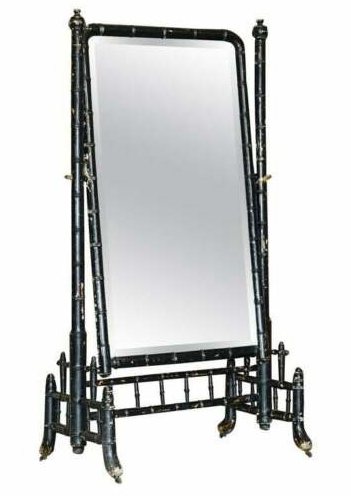
Antique full-length mirrors didn’t fully enter the market until the 1700s, when new manufacturing techniques allowed for producing more giant mirrors.
Large, free-standing mirrors allow you to see most or all of your body at once.
These vintage mirrors come in different forms like:
- Dressing mirrors
- Floor mirrors
- Full standing mirror
These dressing mirrors were initially created as free-standing objects in the late 1700s.
The earliest free-standing mirrors made were from polished metals.
The first Cheval mirrors were created in Paris in the 1800s as standing vanity mirrors. It has four legs and either an oval or a rectangular shape.
3. Antique Vanity Mirror Tray
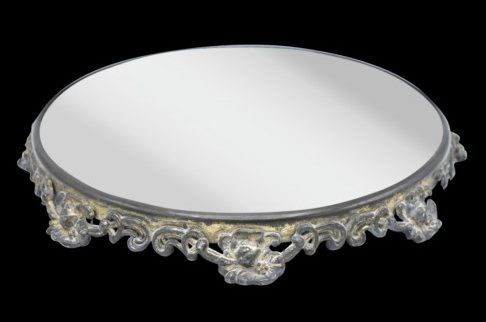
A vanity mirror tray is a fine tray with a mirror glass surface that holds and displays a woman’s fine perfumes.
It is also known as a dresser tray, perfume tray, or mirrored plateau. These
In the past, these trays were also displayed as a centerpiece on the dining room table.
4. Antique Wall Mirror
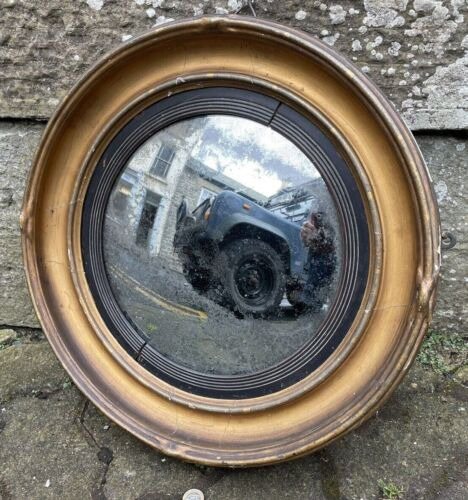
Any mirror intended to hang on a wall is a wall mirror and is available in various forms, dimensions, and materials.
Wall mirrors and other more extensive, more ornate older mirrors didn’t first appear on the market until the late 1700s.
5. Antique Toilet Mirror
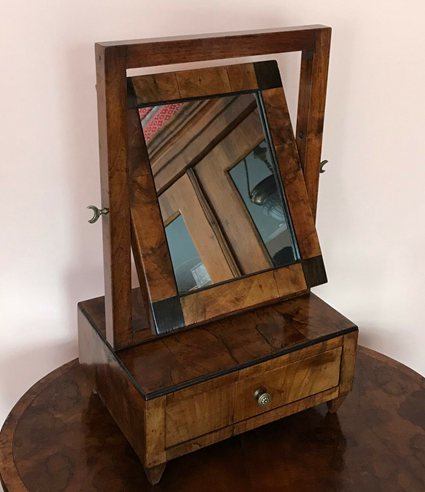
A toilet mirror usually stands upright on a table as more decoration than a practical item.
They began producing it in large quantities in the late 1600s, and by the early 1700s, they had improved to have a base with little drawers.
Antique Mirror Styles
Incredible, isn’t it? The extravagant glitter of framed mirrors somehow catches our attention, most of which are convex mirrors.
These antique styles of these older mirrors will look great in the living room as a centerpiece or flat based above the console table in the entrance.
The following are a few of the most common styles and finishes of antique mirrors from different periods:
Gothic Mirrors
These mirrors have a church window-like appearance. This design, typical from the 12th through the 16th century, has elaborate scrolling or carving and pointed arches at the top.
It is primarily an oval mirror with frame material made of dark wood, for example, walnut or oak. The Gothic mirror style resurfaced in the 19th century and became Victorian Gothic.
However, many modern mirrors still adopt Gothic features using metal frames.
An antique gothic mirror can run up to $400 in value online.
Baroque Mirrors
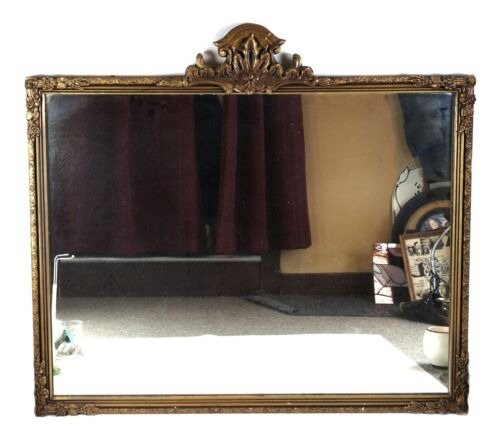
The Baroque mirror styles date back to the 17th century, have elaborate moldings, a Moorish influence on their design, and frequently incorporate gold or silver gilding.
The carvings, however, are not as ornate as those in the Gothic design. The sculptures may feature angels, flowers, and foliage along with fruits.
Sometimes framed mirrors also had inlaid materials and usually a conversation piece.
An 18th century antique Baroque mirror can run up to thousands of Dollars in value.
Neoclassical Mirrors
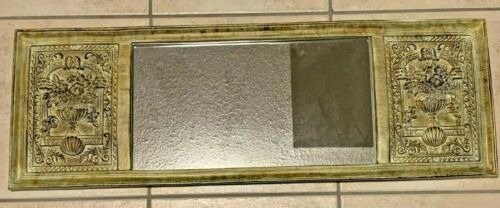
These imitate the typical architectural design of the middle to end of the 18th century. The frame imitated columns and carvings on medallions at the top.
Most of these mirrors have cathedral or rectangular shapes. Silver and gold are frequently used for gilding the frames and a flat base.
You can find an antique renaissance revival neoclassical mirror in good condition online with a value of a little over a thousand dollars.
Rococo Mirrors
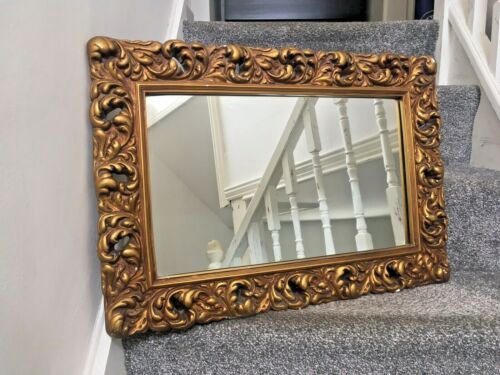
These mirrors’ fascinating frames reflect all things natural in their enticing patterns. For example, flowers, leaves, and feathers are on the top of the frame.
On the reverse of some antique mirrors of Rococo style, there may be a decorative painting that, historically, celebrates the wonders of nature. The rest of the design has a more straightforward style, either lines or beading.
This style can be unique with its uniform moldings next to a mirror that occasionally has an oval shape with a flat bottom and reflects a cathedral.
The Rococ0 antique mirror style sits between $300 and $900 online when in good condition.
Regency Mirrors
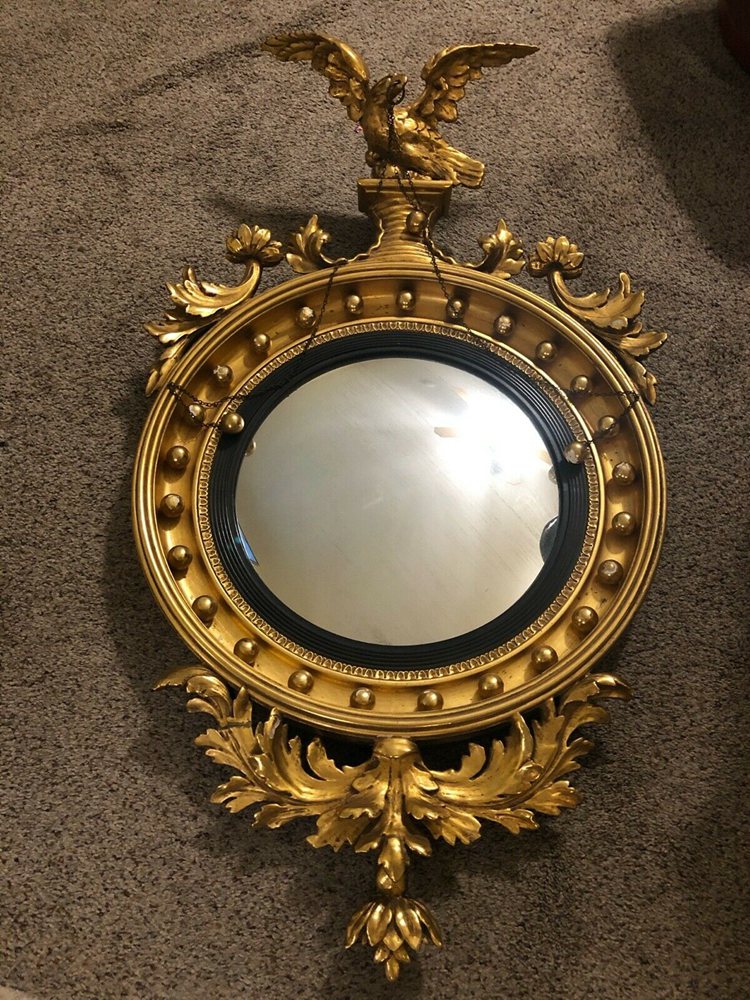
In the early 1800s, England saw a rise in popularity for this, employing oval mirrors with narrower frames. Gilded gold and mahogany wood were the two main finishes.
Columns, friezes, cornices, and floral and foliage patterns are examples of design components.
French Mirrors
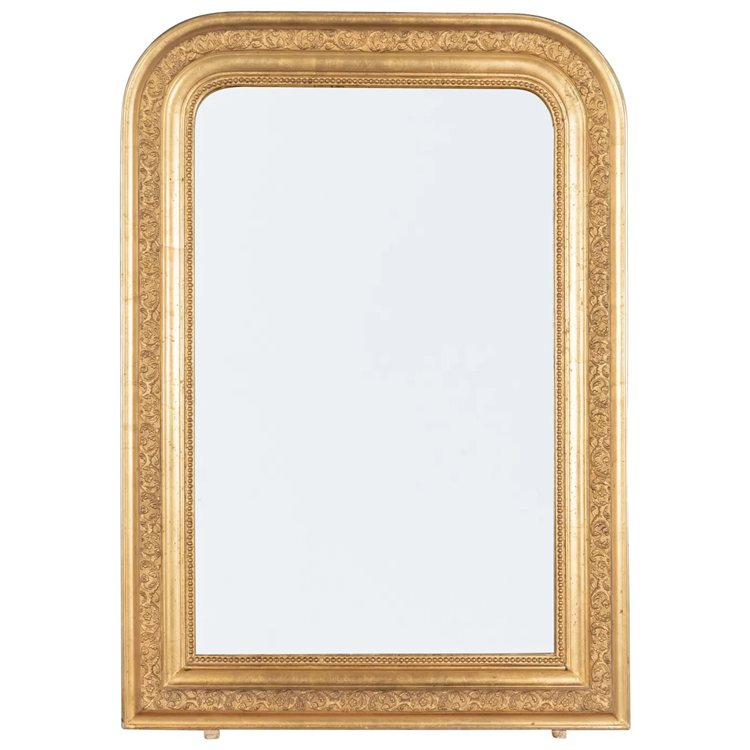
French mirrors are less complex in their molding and framing than some of their contemporaries on this list. However, they were typically made to seem as good as a chimney breast because this is where they were most often hung.
Columns, paneling, and hand-beveled decorations embellish their basic yet extremely geometric design.
The beautiful mirror was ideal for drawing attention to the main feature of a room, especially in buildings with high ceilings, thanks to their straightforward yet attractive design style.
An antique French-designed mirror can value up to $1000 online.
Antique Mirror Value
As someone who loves antiques, you must make an effort to determine an antique’s potential market value.
For every desired product, the facts are essentially constant. But certain factors can raise or lower the value of your antiques.
The following factors can either affect the value of an old mirror negatively or positively.
Your Mirror’s Age
Before we head on to the valuing section, let us talk about the most crucial thing in determining the value of your antique mirror, which is the mirror’s age.
The issue of modern mirrors in an old frame to give it an antique look are now increasingly popular. As a result,
The case of old frame material and modern mirrors has made it critical to always look closely at the so-called antique mirrors on the market before buying.
For this reason, in this section, we will look at the various ways to confirm the age of an antique mirror.
Inspect the Glass Surface
The most crucial information regarding its overall age is found in the glass. Modern mirrors have a very smooth surface devoid of bubbles or flaws.
The modern manufacturing process pays close attention to removing even the most minor imperfection.
But in older mirrors, the procedure was much different. The old mirror was undoubtedly embellished with obvious or barely perceptible flaws.
An antique mirror has a reflective silver mercury backing that degrades and oxidizes over time, developing sporadic hazy areas all over the surface and around the edges.
If the mottled patches look too consistent, your supposed old mirror may be a replica mirror plate.
Also, thoroughly inspect the glass for colors. A colorless glass may indicate a replaced mirror glass or a modern mirror.
Depending on what you want, inspect the mirror if it is a concave or convex mirror using the three categories of image determination.
The above glass conditions can negatively affect the price of your vintage mirror if not well checked.
Examine the Backing and Frame Material
Antique mirrors often have a wood backing instead of a paper backing found in modern mirrors. In addition, silver backing is also present in new mirrors.
Verify that all hangers, screws, and nails are authentic by inspecting the construction.
The reflective coating on the back causes light reflection in an old mirror. Otherwise, regardless of the time period, it’s just a regular sheet of old glass. Additionally, the outer coating can reveal far more than meets the eye.
On the back, almost all contemporary mirrors on the market come equipped with a silver finish. But over time, preferences changed to improve the quality of mirror reflection. In actuality, the practice began in the early 16th century with the use of deadly mercury.
Hand-forged fasteners would appear sloppy and uneven compared to contemporary, machine-made alternatives.
Look for a mark or tag on the rear that identifies the maker and country of origin.
In addition, antique collectors may place a premium on scarce items only produced in small quantities. Therefore, the bar should be set relatively high with the fewest identical possibilities. Most mirrors that are produced in large quantities should cost much less.
Finally, look for minor flaws that set a handcrafted mirror apart from a modern flawless replica.
The frame ought to exhibit normal aging-related wear and tear.
Old frames might be metal, plaster composition, solid wood, or wood veneer.
Check the mirror frame for significant repairs. It will lose its market value if it has obvious or carelessness repair marks.
Appraisers
An appraiser is someone who regularly evaluates antiques. They are one of the best bets to get an actual value for your old mirror.
Not everyone has the good fortune to attend an Antiques Fair event.
However, you reach out to a professional appraiser, a revered antique shop, an auction house, and a group that provides free appraisal services.
For information about events in your region, get in touch with your appraisers’ association.
Nevertheless, visit a trustworthy local antique dealer that’ll provide free appraisal services.
To get a solid idea of your mirror’s actual worth, visit numerous dealers rather than relying solely on one’s viewpoint.
One of the advantages of appraisals is that written appraisals can serve insurance purposes. But if you cannot get a free appraisal, it may cost you a bit on your mirror value.
Online Stores
Another viable means of getting a precise value for your old heavy mirror is by checking online stores. You can search for the sold price of an antique mirror online.
Online antique sites frequently contain information about each mirror, including insights about their history and rarity and providing an estimate of worth. Consult several online auction and antique websites to support your value estimates.
Where to Buy or Sell Antique Mirror
Do you have an antique mirror that you want to sell? Are you a lover of antiques looking for something new to add to your collection? Do you need a reputable dealer? If your answer is yes, below is a list of places you can visit to sell off your antique mirror or buy one for your collection.
Final Words
The types of antique mirrors have remained the same over time, but the patterns have continually changed to reflect the styles of a particular period.
The first step in locating an antique mirror in its appropriate manufacturing era is typically identifying its style. It is easier to estimate the worth of an antique mirror if you know its year of production.
In addition, an antique mirror in excellent condition will fetch higher values.
This article covers various designs and categories of antique mirrors in detail. Additionally, we demonstrated how to estimate the worth of the earliest mirrors.
Please feel free to leave a comment about your favorite antique mirror style.

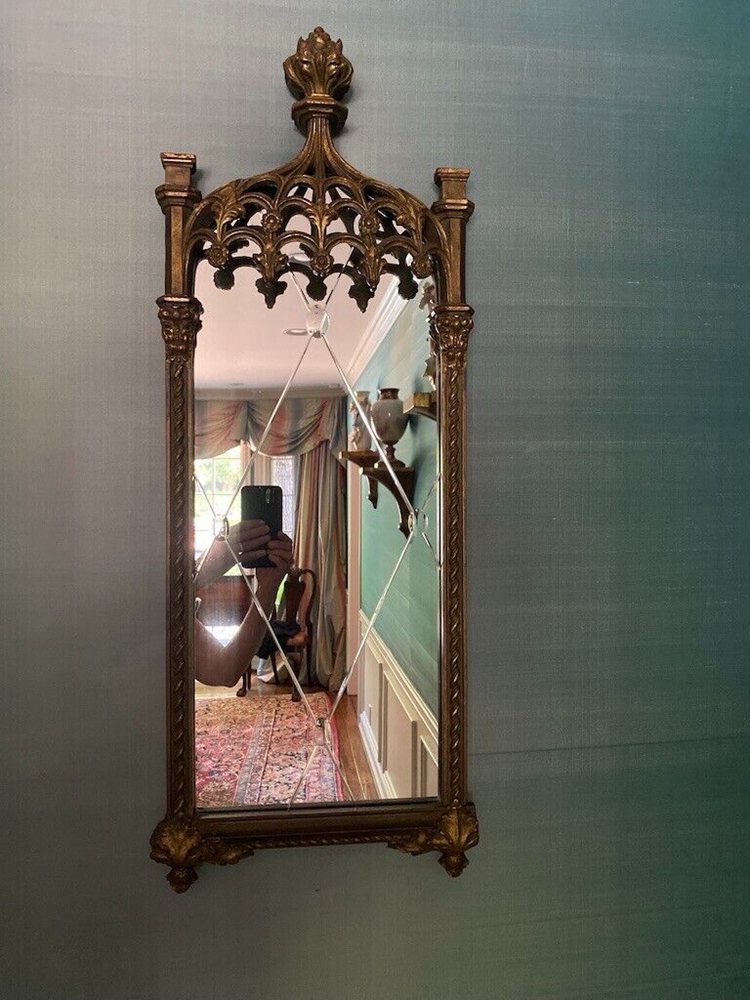




![Where To Sell Antique Furniture In 2022 [Ultimate Guide]](https://www.jacquelinestallone.com/wp-content/uploads/2022/09/Etsy-Your-Place-To-Buy-And-Sell-All-Things-Handmade-600x450.jpg)


